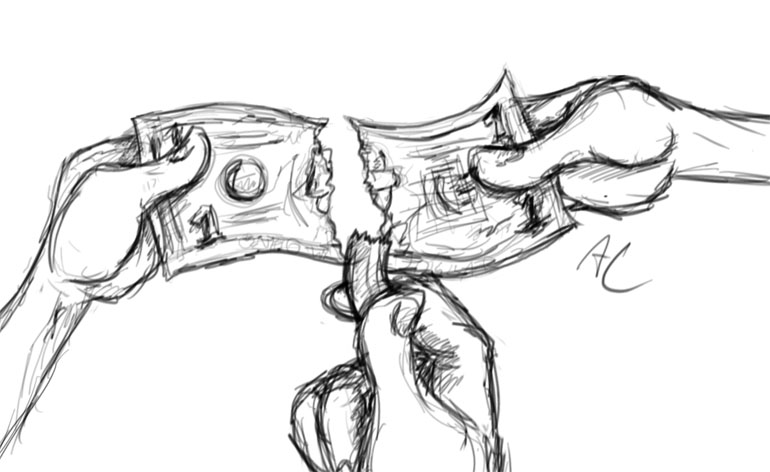
Students can help alleviate poverty in Vermillion with simple actions
In college, students tend to focus on their individual educations and futures. But as we live in our own little worlds, a community epidemic is occurring right under our noses.
As one of the lowest income counties in South Dakota, Clay County is no stranger to issues related to poverty. According to South Dakota Dashboard, the county has an average income of $28,000. Statistics from Feeding America show that the city of Vermillion itself has a poverty rate of about 37 percent. These numbers won’t just decrease by themselves. They require a cooperative effort to look beyond individual needs and reach out to others.
This issue is not new for Vermillion. The Volante has covered initiatives and studies conducted on local poverty in the past, but we cannot deny that numbers are still increasing. The fight against poverty would be nothing without the South Dakota Department of Social Services, churches, the school district, the Department of Labor and local charities joining forces with the United Way of Vermillion. Over a year later, while we’ve made significant progress, we’re still far away from our goals.
When first visualizing poverty, images of starving children in third world countries usually comes to mind. Most people don’t necessarily picture their neighbors included in those struggles. Actually addressing and acknowledging the problem is the first step toward strengthening every member of the community.
Luckily, many people and organizations are already stepping up to lend a helping hand. Habitat for Humanity, the Welcome Table, the Backpack Program and Vermillion Food Bank all make positive contributions for those struggling to meet basic needs of food and shelter. The new Food Recovery Program at USD tackles the problem directly, taking food that would otherwise be thrown out and donating it those facing food insecurity. Every student at least once, but hopefully more often, should volunteer in Vermillion.
We get used to the convenient accommodations of the USD campus, we overlook the situations some are facing just a few blocks away. By putting a real, human face to the numbers, the reality of local poverty becomes clear. Until even considering volunteering, many don’t even realize that poverty, homelessness and food insecurity affect a small town so heavily. Rural poverty is just as devastating as poverty in urban inner cities or the developing world. Poverty is poverty. It has no distinct, universal appearance. The people affected don’t choose to struggle. But we can choose to bring hope to these people when all they may see is hardship.
And with the issues happening a small town, it’s easy to let them slip by and think somebody else will take care of them. This notion is far from the truth. We cannot allow problems so obvious to go unnoticed.
USD’s student body makes up a good portion of the town’s population during the semester. We all need to take a spare hour or two out of our schedules to bring light and strength into the world. Some might question the potency of their actions on the small scale, but every effort makes an extraordinary difference. We don’t have to be a group of celebrities singing “We are the World” to utilize our potential in uplifting Vermillion and Clay County. We simply need each other.
